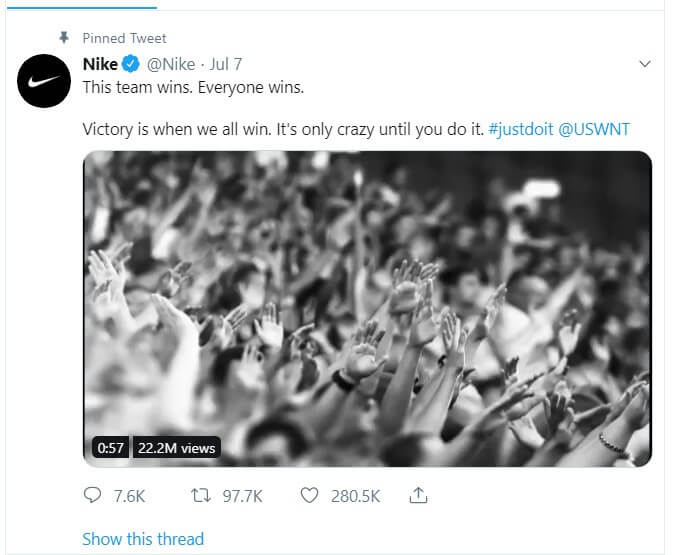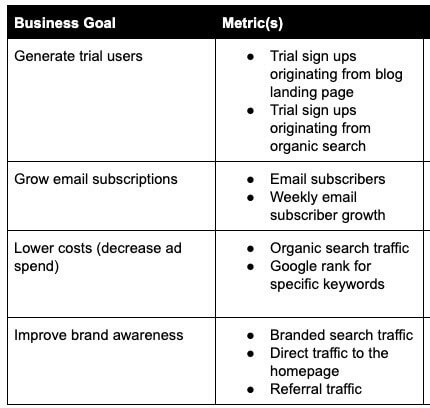One of the biggest drivers is emotion. If you can speak to your audience’s emotions, you’ve got them. One way to achieve that goal is through s successful marketing campaign.
Think Pepsi, Coca-Cola, Apple, and Nike. You like them because of their TV or YouTube ads. They involve us. They heighten our emotions. They speak to our hearts as well as our heads.
All these companies have spent years investing in marketing campaigns to win us over.
That’s the power of planning and managing a successful marketing campaign; it can do wonders for your business.
And as an advertising agency that has helped hundreds of companies create successful campaigns, we know what it takes to launch one.
Let’s talk about managing ROI-driven marketing campaigns.
What is Marketing Campaign Management?
Entrepreneur defines a marketing campaign as ”a specific, defined series of activities used in marketing a new or changed product or service, or in using new marketing channels and methods.”
Put simply, marketing campaigns are the process of finding an idea to reach your audience and market an existing product or offer a brand new one.
The “management” part is the planning and execution that puts your idea in front of your audience.
And the most important thing in campaign management is your ability to define clear goals, set realistic deadlines, and track overall performance.
Remember those outstanding, jaw-dropping ads we see on TV? These are well-executed marketing campaigns. Like this one from Nike:

Whenever you want to hit a new milestone in your business – increase sales, retain customers, build more awareness about your new product – you’ll have to launch a marketing campaign to achieve that goal.
3 Steps To Manage A Successful Marketing Campaign
Marketing campaigns start with a goal, then a detailed plan to reach that goal.
If you look around for examples, you’ll find a ton of brilliant campaigns that appear to have very little in common.
That’s because there is no “one size fits all” template to creating a successful marketing campaign. It all comes down to your own ideas and how well you know your audience.
But if you distill all those great examples and look behind the differences, you’ll find the same three steps.
And to set you up for success, we’ll break down the fundamentals of what to do to maximize your returns.
Step 1: Define Your Goal
In this first step, your focus should be primarily on two things: ideation and goals.
Don’t worry at all about how crazy or unrealistic your team’s or your own ideas are. Just brainstorm as many ideas as you can.
For example, get your team in a meeting room, explain the product, the offer, or even the marketing goal you want to achieve, and just let them brainstorm and come up with ideas.
Organize these ideas into a Google Sheet and give every idea a rating based on:
- The impact will have on your business, on a scale from 1 to 10
- The budget required to execute it, on a scale from 1 to 10
For example, let’s say that one of the ideas your team suggested is building an alternative landing page that shows how your product is better than your main competitor.
And advertising the landing page on Google Adwords using your competitor’s brand name.
What impact will this have on your business and how much money is needed to do it?
- Impact: 8
- Budget: 9
With these ratings, you can cherry-pick the best ideas to create a marketing campaign for.
Now, you have to dive deeper and align SMART goals to execute these ideas. For example:
- Launching a new product
- Promoting an existing offer
- Driving more leads
These are very generic goals. SMART stands for Specific, Measurable, Attainable, Relevant, and Time-based.
For example; instead of a generic goal like “launching a new product”, let’s make it SMART:
- Specific: Increase sign-ups for our new email automation feature
- Measurable: 500 sign-ups
- Attainable: Using Google Adwords to promote our offer’s landing page
- Relevant: Targeting competitor’s branded terms
- Time-based: By the end of Q3
Now the goal becomes much more specific, measurable, attainable, relevant, and time-based. Do this for all your goals to better launch a successful marketing campaign.
Step 2: Define Your Target Audience
After identifying your goals and making them SMART, it’s time to understand the audience you’re targeting with each campaign.
Yes, you read that right: define your specific target audience for each campaign.
Your core work in this stage should be on figuring out these key things:
Funnel stage: Not all of your audience is on the same journey. Some are loyal customers who get excited by your brand and some don’t even know who you are.
Some know they have a problem that you could solve and some are not so sure. You have to really think wisely and segment your audiences based on where they are in their customer journey.
Marketing channel: What social media platform do they use the most? What websites do they read?
Who are the influencers they follow and let in their inbox?
Again, you have to be very specific and pick the best marketing channels for your campaign.
Messaging: How do they talk? What acronyms do they use to describe their problems? What type of content do they consume the most?
Work on figuring out the content type and the language you’ll use in your campaign to attract them.
Striving to find exact answers will help you narrow down your campaign and make sure you know what to say and where to place your CTAs to achieve your goals.
Step 3: Set Your KPIs and Launch Your campaign
Spending enough time on knowing your audience will make this a lot easier. The goal of this step is to tie realistic KPIs with your goals, to measure them.
Growing an email list, driving targeted traffic to your landing page… these aren’t measurable KPIs. But your weekly or monthly traffic and email subscription performance are a good KPI.
Build something like this to make things easier for you and your team:

Associate every goal with a realistic metric to measure it.
Then rinse and repeat. This way, you can easily analyze your results and find your weaknesses to better inform your next marketing campaign.
Before you launch your campaign, please do this:
Study your competitors: Using a marketing tool like SpyFu can give you great insights into how your competitors are building and formatting their landing pages and how much they’re spending.
This can help you avoid their mistakes and create realistic KPIs.
Don’t ignore the right things: The majority of marketers focus on how they can stand out and spend too much time working on that.
This is a nice idea but it won’t move the needle. Make your message clear for your audience and let them know how they can take the next step and what to expect. That’s what matters.
That’s all you need to start a marketing campaign. Go ahead and rock.
Final Words
Marketing campaign management is a systematic, realistic process to help you promote your existing or brand new offers using a given marketing channel.
Remember that there are no mandatory rules to follow or even a one-size-fits-all approach.
Just learn the three fundamentals and follow them as a starting point to launch your next campaign.
Make sure that:
- Your goals are SMART so that you can see their impact on your business and when you expect to achieve them
- You spend sufficient time on knowing your audience. Customer research is the backbone of every successful marketing campaign
- You don’t set generic KPIs. Be specific, to easily track your performance and analyze it to better inform future marketing campaigns
And don’t forget to let us know how your first marketing campaign goes!










